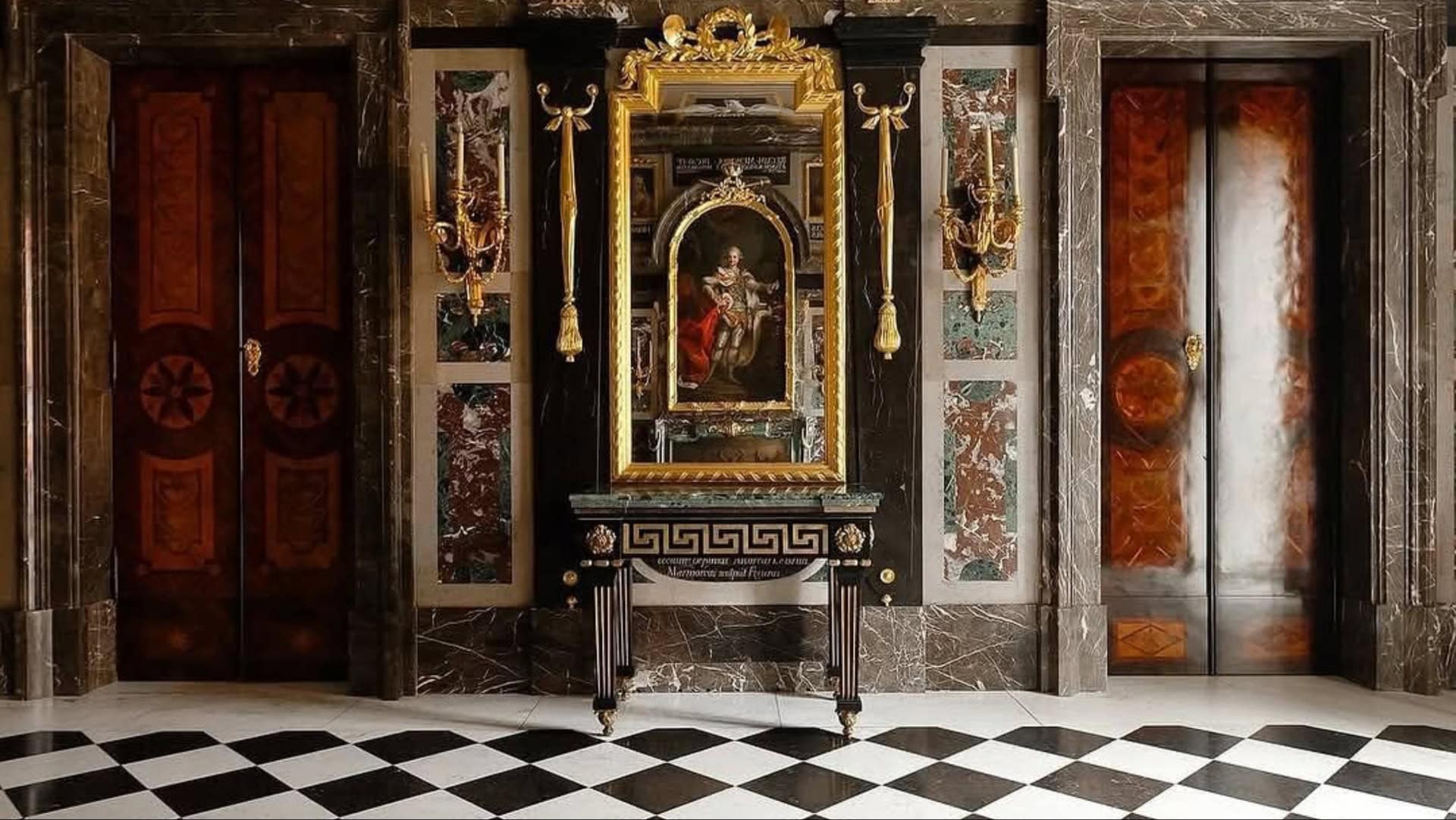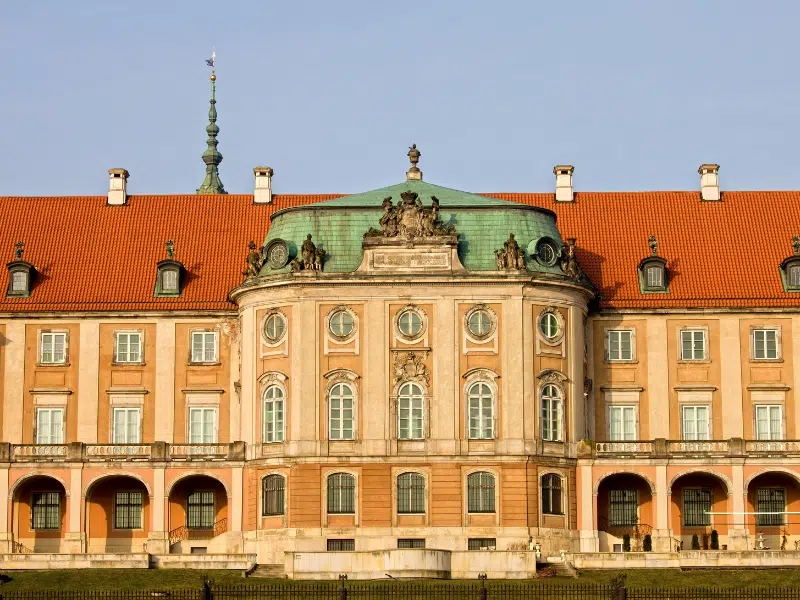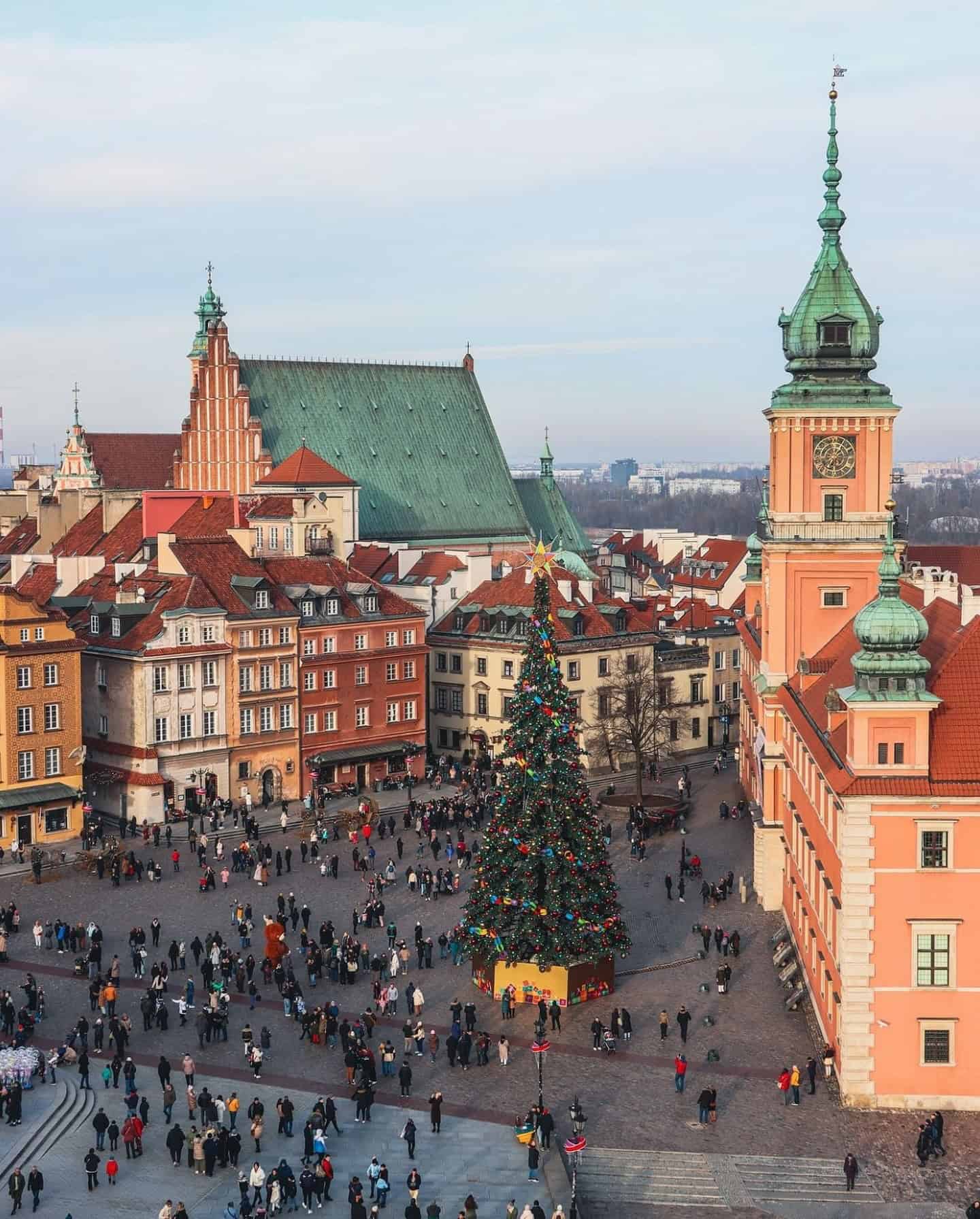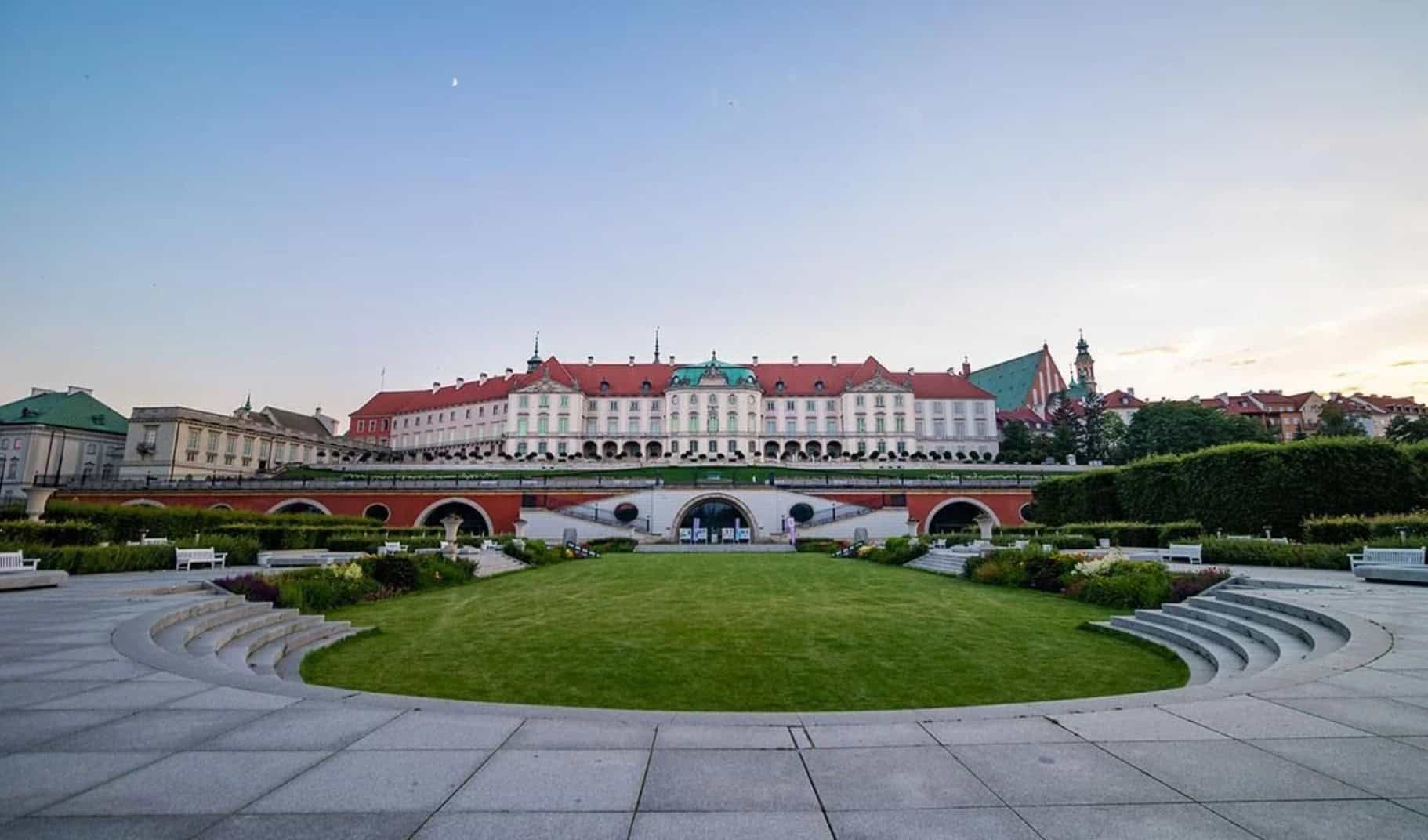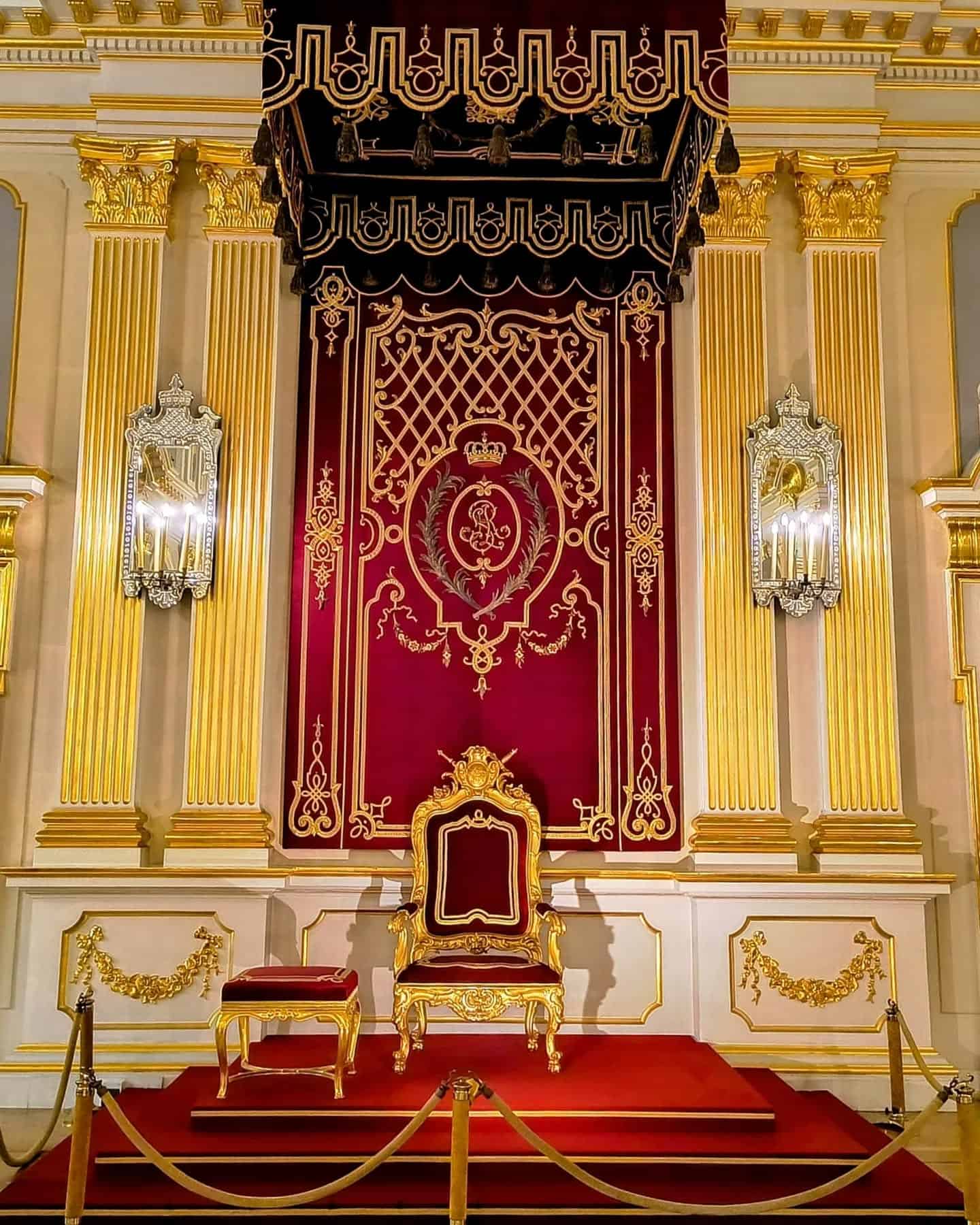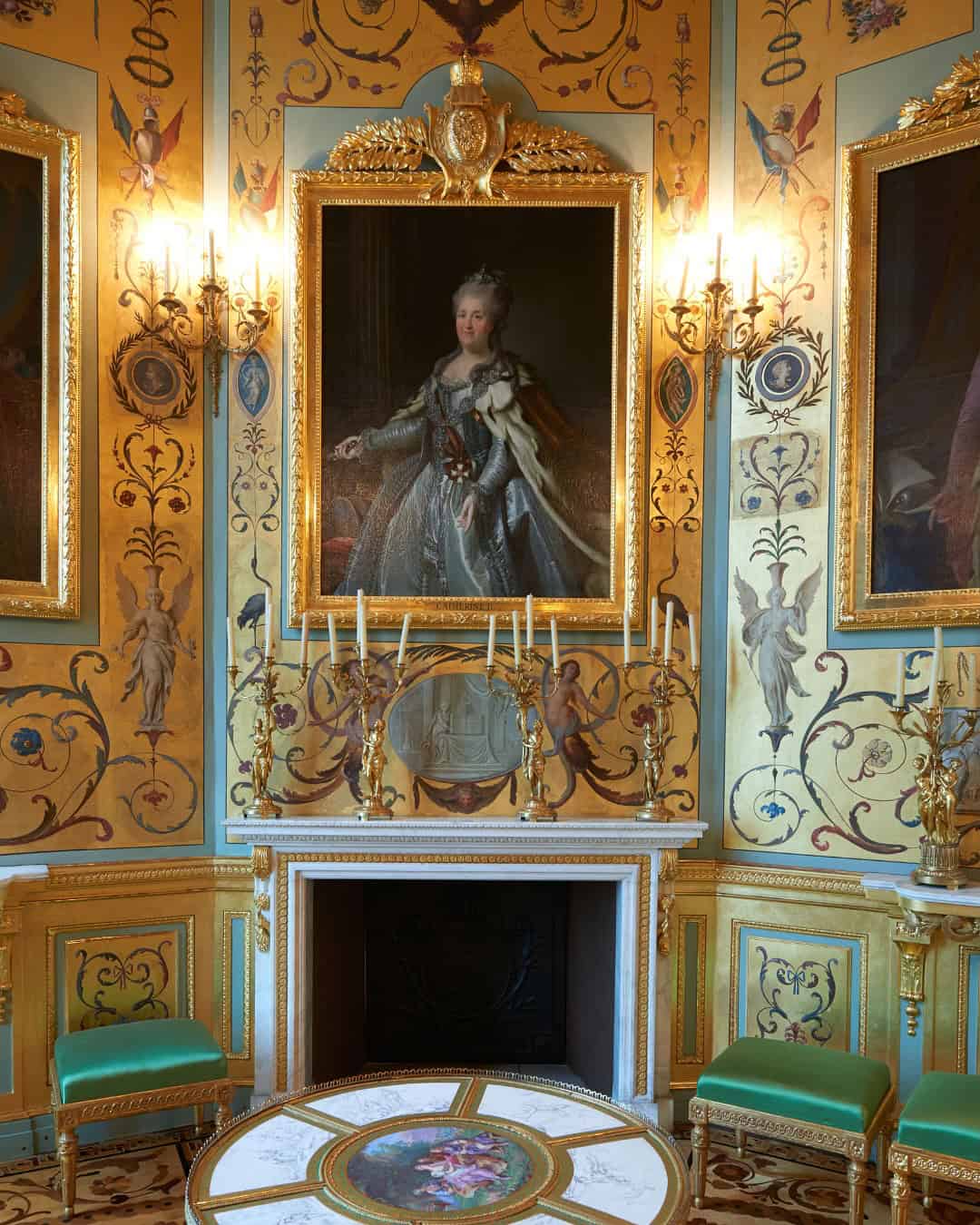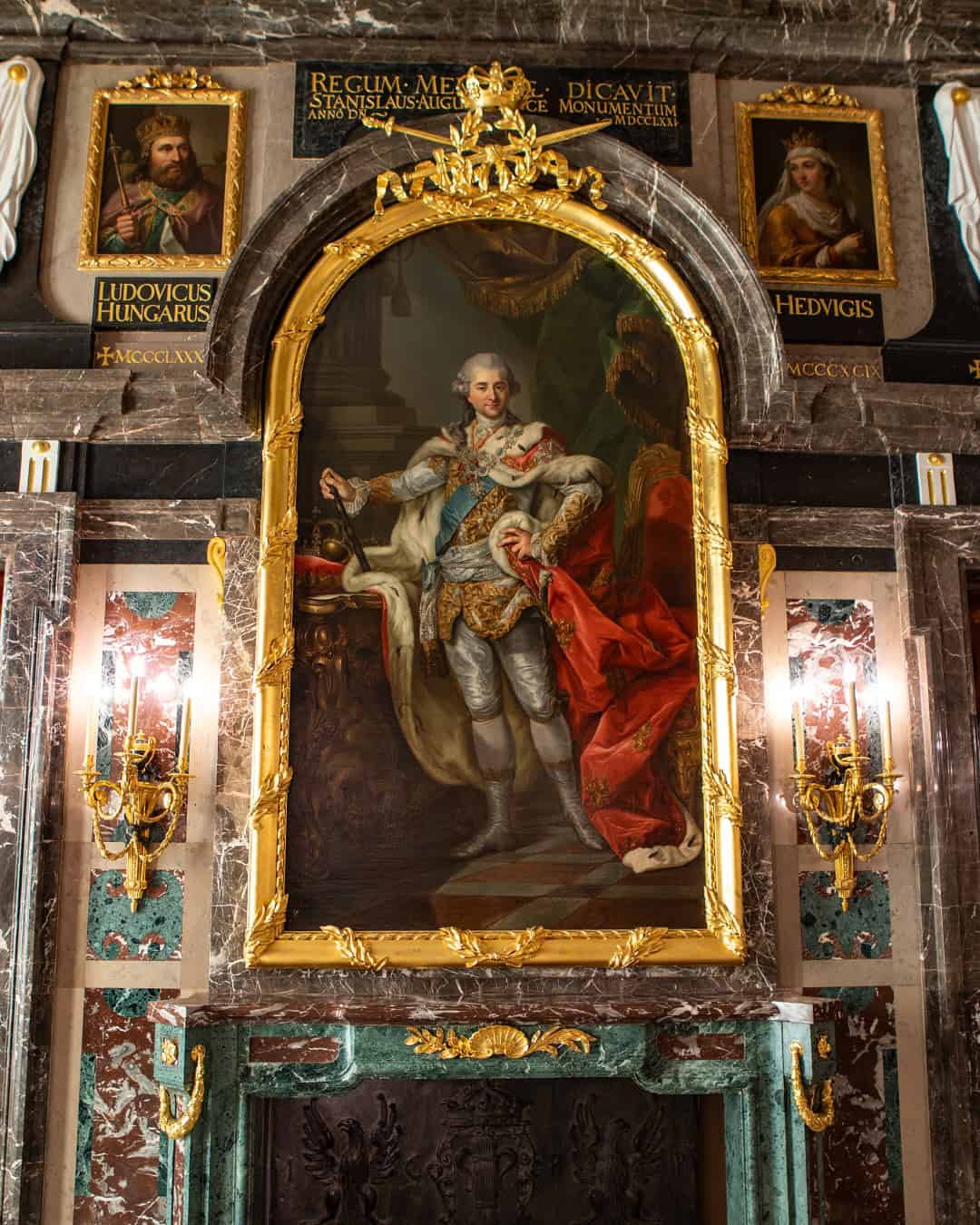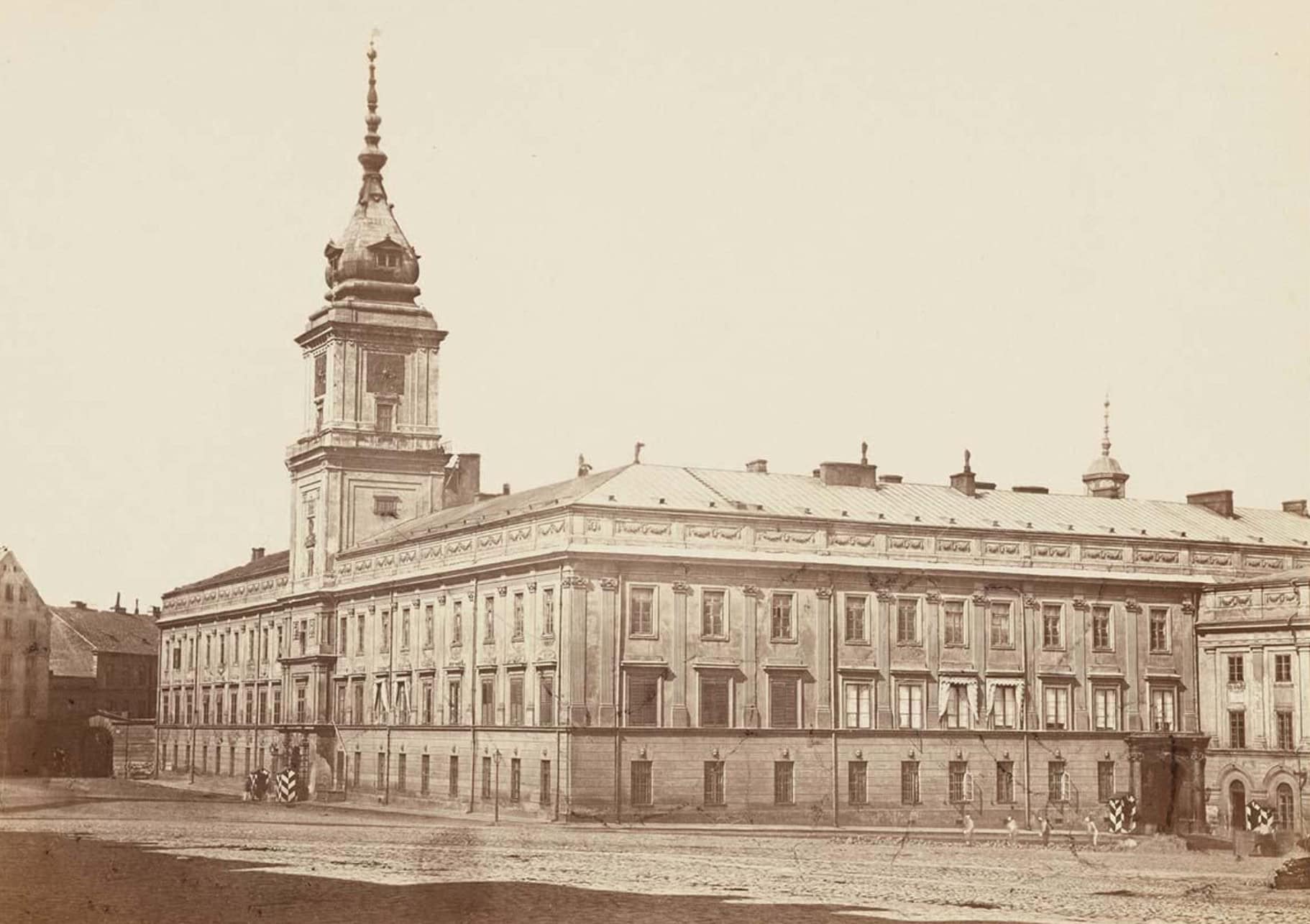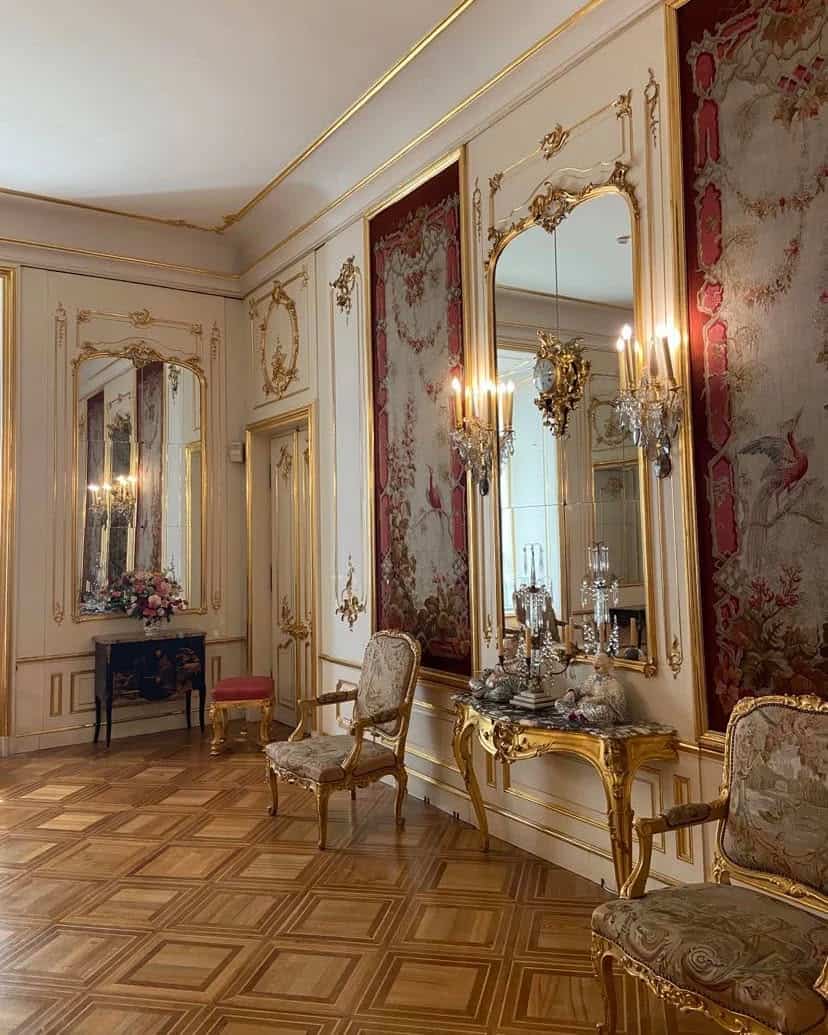Step into the grandeur of the Royal Castle in Warsaw, a beacon of Poland’s rich history and culture.
This iconic landmark, nestled at the heart of the city, is more than just a former royal residence. It’s a testament to centuries of Polish resilience, art, and architecture.
From the opulent Marble Room adorned with regal portraits to its pivotal role in drafting the groundbreaking Constitution of 1791, the castle’s stories are captivating!
1. The Marble Room’s Royal Portraits
A masterpiece of artistry, the Marble Room in the Royal Castle is adorned with portraits of Polish monarchs.
Created during the reign of Władysław IV, its grandeur was later enhanced by King Stanisław August.
The room’s marble elegance and regal decor make it a must-see.
As you stand beneath the ornate cornice, you can almost hear echoes of history reverberating through the walls, making each visit a journey through Poland’s royal past.
2. Birthplace of the May 3rd Constitution
Within the castle’s walls, the groundbreaking May 3rd Constitution was born in 1791.
This pioneering document marked a significant step in European democracy, being the first constitution of its kind in Europe.
As you explore the space where visionary minds once gathered, you’ll feel the weight of their ambition and the castle’s legacy.
A visit here offers a glimpse into the political genius that once paved the way for modern governance.
3. Architectural Harmony of Italian Mannerism
The Royal Castle’s architectural beauty is a testament to Italian Mannerism.
Designed by architects like Matteo Castelli and Giovanni Battista Trevano, its structure reflects a harmonious blend of Renaissance elegance and Baroque grandeur.
Wandering through its corridors, you’re transported to a bygone era where each arch and column tells a tale of artistic brilliance.
The castle stands as a symbol of Warsaw’s architectural innovation and heritage.
4. Neoclassical Transformation Post-Partitions
Following the partitions of Poland, the Royal Castle embraced a new life with a neoclassical makeover.
This transformation is evident in its elegant facades and symmetrical design, symbolizing a renaissance of Polish identity.
The castle’s neoclassical elements offer a serene beauty, inviting visitors to reflect on its historical journey from a royal residence to a beacon of national resilience and pride.
It’s a harmonious blend of past and present.
5. WWII Destruction and Remarkable Reconstruction
The Royal Castle’s history is a tale of resilience. Devastated during WWII, it rose from the ashes through meticulous reconstruction.
The restored castle stands as a testament to Poland’s indomitable spirit and commitment to preserving its cultural heritage.
As you walk through its halls, you’re enveloped in stories of survival and rebirth, making the castle not just a building, but a symbol of national perseverance and pride.
6. UNESCO World Heritage Recognition
In 1980, the Royal Castle and its surrounding Old Town were recognized as a UNESCO World Heritage site.
This accolade celebrates their historical significance and architectural beauty. Walking through the castle and its lush gardens, you’re reminded of its global cultural impact.
The designation as a UNESCO site ensures that the Royal Castle’s rich stories and stunning architecture are preserved for future generations to appreciate and cherish.
7. The Castle’s Art Collection
The Royal Castle houses an impressive collection of art, showcasing works from Polish and European masters.
From paintings by Titian and Rubens to sculptures by Giambologna, the collection offers a visual feast.
Each piece tells a story of its own, adding to the rich tapestry of the castle’s cultural legacy.
Wandering through its galleries, art enthusiasts are treated to a glimpse into the castle’s artistic heart, a sanctuary of creativity and history.
8. The Castle’s Role in Polish Enlightenment
The Royal Castle was a cradle for the Polish Enlightenment, a period of intellectual and cultural flowering.
Hosting ‘Thursday lunches’, the castle became a hub for thinkers, artists, and reformers. This vibrant exchange of ideas led to innovations in education and the arts.
As you explore, you can almost hear the echo of passionate debates and visionary plans, reminding visitors of the castle’s role in shaping Poland’s intellectual landscape.
9. The Historical Curia Maior
The Curia Maior at the Royal Castle served as a pivotal meeting place for Polish Parliament.
It was here that significant decisions were made, shaping the future of the nation.
Standing in this grand hall, one can imagine the fervor of political debates and the wisdom shared within its walls.
The Curia Maior is not just a room. It’s a monument to Poland’s democratic endeavors and a testament to its legislative history.
10. The Legends of Sigismund’s Tower
Sigismund’s Tower, rising majestically above the Royal Castle, is steeped in legend and history.
Originally built in the early 17th century, it features a clock with gilded hands. Tales of royalty and homage echo through its stone walls, offering a glimpse into Warsaw’s past.
As you gaze upon the tower, you are reminded of its watchful presence over the city—a silent witness to the ebb and flow of Polish history.

